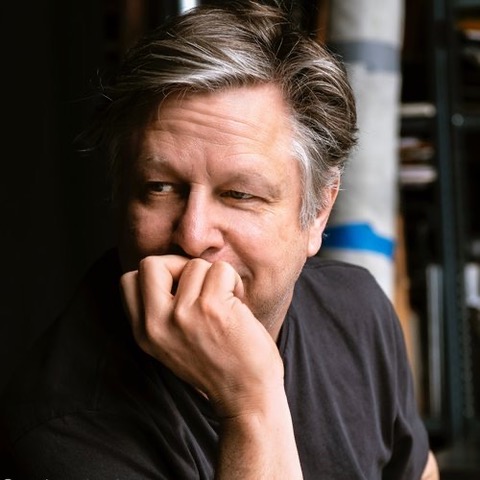
Portrait photographer Andrew French visits for PCA&D Artist Talk
Tuesday, November 8th, 2022
Based in New York City, photographer Andrew French uses his northlight studio in Union Square to capture a signature look in portraiture, editorial, and commercial images for clients such as Esquire, House & Garden, Food & Wine, and TIME magazines, as well as Microsoft, Coach, Nordstrom, and Veuve Clicquot.
Big names, and big clients. Yet French says the process of mentoring emerging photographers (and learning from them as well) is an especially rewarding part of his career.
The photographer visits PCA&D Friday, Nov. 11, for an Artist Talk in the Atrium as a guest of the Photography & Video Department. French’s presentation is open to the entire PCA&D community.
A member of the faculty at New York University and the International Center of Photography, French shared thoughts about mentorship, black and white vs. color, scoring natural moments from your photography subjects, and cultivating non-photography skills as a creative.
You serve as a mentor to many photographers, just as you were mentored when you were starting out. What does this mentor/teacher role bring to your own practice?
Andrew French: Teaching, sharing ideas, and discovering new ways to approach photography is always exciting to me. It goes both ways. Students learn from teachers. Teachers learn from students. Whether you are in a workshop, in a class, or on a set working with a crew, seek out people who are willing to share their creative and technical knowledge and exchange ideas. I’ve always had a “hungry eye” for everything related to photography and I found ways to work with some legendary photographers to learn everything I could from them and their creative process. It’s rewarding for me to pass on that knowledge and open my studio to emerging photographers. Guiding my students to experiment and make discoveries informs my creative process. I never stop learning.
Besides what may be dictated to you by an assignment, what determines whether you end up shooting in black and white or color?
AF: This is such a subjective and ultimately personal decision. It’s up to what the photographer wants you to see and feel. I experiment shooting in both black-and-white and color and let the subject and the mood of the image decide the direction I’ll take. I think that some images are more effective in black and white and some in color. Often a black-and-white image has more “color” than a color image for me.
What’s a non-photography skill that photographers who are just starting out should work to cultivate?
AF: Be curious, enthusiastic, and be yourself. Ideally, you want people on both sides of the camera to enjoy working with you and get inspired by your ideas and what you are creating. Have fun, share your love of photography, be patient and kind on set — this will help you capture great images and cultivate a strong creative network.
With the rise of the selfie and the 24-7 performative feel of social media, is it becoming more difficult to get a “natural” moment from your subjects?
AF: People are more camera-conscious than ever before especially with subjects who know and use social media. But even before selfies, subjects often acted for the camera. It helps if you create a relaxed atmosphere and include the subject in your process. I’ll tell the subject it’s OK not to smile and ask them not to pose. I also found that if I shoot with a view camera or a medium-format camera, it can capture a subject’s attention and disarm them a bit.
Do you have a process for making people who aren’t used to being in front of the camera, comfortable being there?
AF: Talk to each other. Be a good listener. Show genuine interest in the person you are shooting. You want them to trust you and you should trust them. Tell your subject at the beginning of the shoot how you plan to photograph them. Sometimes I’ll say, “Are you breathing?” It seems silly, but a lot of people hold their breath when they’re not comfortable and it shows in the images. I don’t do a lot of directing but will suggest small ways people can position themselves, so the lighting and pose are flattering. I also think people get a little stiff after 20 minutes of posing for portraits so have a few different ideas for setups and how you are shooting them. Remember you are just taking pictures. If you’re lucky you’ll get some good pictures and, if you’re really lucky, you’ll get a great one.
Photo credit: Robert S. Johnson
